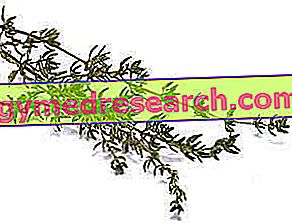The plant extracts are liquid pharmaceutical preparations (fluid extracts), solid (dry extracts) or of intermediate consistency (soft extracts), obtained starting from fresh vegetable drugs or more commonly dried, through suitable extraction processes; these include the use of appropriate solvents and the use of maceration or percolation, or other suitable procedures. The degree of elimination of the solvent will then determine the consistency of the plant extract (fluid, dry or soft).

Depending on the solvent used, the plant extracts are classified as aqueous, hydroalcoholic, alcoholic and ethereal. Regardless of the choice of solvent, its elimination up to the prescribed concentration must be carried out using procedures to preserve the active ingredient.
If necessary, after extraction, unwanted substances are eliminated from the plant extract; other times the drugs to be extracted must be subjected to a preliminary treatment (and eg. Inactivation of enzymes, degreasing, etc.).
Whatever the technique used, the production of any plant extract begins with the selection of the drug, that is the part of the plant used for therapeutic purposes. In the set of countless substances that constitute it, they are recognized as pharmacologically inert, unwanted or poorly active, and others with the sought-after pharmaceutical properties. Inside the plant extracts, the latter are now increasingly concentrated and standardized, so as to ensure a therapeutic effect as uniform as possible; at the origin, in fact, the active ingredient content of the drug varies greatly based on the methods of cultivation, harvesting, conservation and treatment of the plant. To ensure a good extraction of the substances, the starting drugs must be reduced to a convenient degree of subdivision, while the choice of the solvent is related to the type of active ingredients that are desired to be extracted, and to the undesired ones to be left in the so-called lees or residue.
The Ministry of Health regulates the extracts marketable in Italy in the form of supplement; here it is possible to consult the list of allowed and non-permitted plant extracts by clicking on the relative links.
Fluid vegetable extracts
They are dense liquid preparations in which, in general, a part by weight of the extract corresponds to a part by weight of the dried raw material (in practice, therefore, one ml of fluid extract must contain the quantity of active ingredients of a gram of drug dry). The fluid extracts can be prepared using the procedures indicated in the general part (maceration, percolation), but also by dissolving a dry or soft extract in an appropriate alcohol. When left to rest, the fluid extracts can form a slight deposit. Those alcoholic are particularly rich in active ingredients, since alcohol, unlike water, is able to extract almost all of the phytocomplex from the starting vegetable drug. Alcohol, in addition to having a superior solvent power, acts as an excellent preservative. Whatever the method of preparation chosen, the extracts obtained must have a comparable composition; sometimes used as such (in drops), they are more often used to prepare syrups, potions or other pharmaceutical forms.
Soft extracts
They are preparations of intermediate consistency between liquid extracts and dry extracts. They are obtained by partial evaporation of the extractive liquids, as long as the residue no longer wets the paper without glue. They can be prepared with the methods described for fluid extracts and, like the same, can be added with appropriate antimicrobial preservatives. The dry residue is generally not less than 70% by mass.
Soft plant extracts can be used in the preparation of pills, ointments and suppositories. Those titled are taken to the prescribed title by means of appropriate inert substances (lactose, sucrose, dried starch).
Plant extracts in cosmetics
- Rosmarinus Officinalis Extract
- Calendula Officinalis Extract
- Ruscus Aculeatus Extract
- Camelia Sinensis Extract
- Centella Asiatica Extract
- Echinacea Angustifolia Extract
- Tilia Platyphyllos Extract
- Chamomilla Recutita (Matricaria)
- Triticum Vulgare Germ Extract
- Vaccinium Myrtillus Extract
- Arnica Montana
- Hypericum Perforatum
- Malva Silvestris Extract
- Birch Alba Extract
Dried vegetable extracts
Dried plant extracts are presented as powdery preparations, but they cannot be considered powders. The latter, in fact, are obtained from the drug spraying process, without any solvent extraction. The therapeutic activity of the dry extract is therefore higher, at the same dose, than that of the powders, where in addition to the significant presence of unwanted substances, there are others that limit the bioavailability of the active ingredients. The dry plant extracts are obtained by total evaporation of the solvent at temperatures below 50 ° C, so as not to alter the active ingredients. If these are particularly thermolabile or easily degradable, the elimination of the solvent can be performed by nebulisation or lyophilization (cryo-drying). Dry extracts are generally characterized by a dry residue of not less than 95% by mass; due to the high hygroscopicity (they absorb environmental humidity), they are then packaged in capsules or tablets, to be stored in a dry place away from light. The titrated dried plant extracts are brought to the prescribed title by means of appropriate inert substances (lactose, sucrose, dried starch) or by means of another dry extract obtained from the same raw material used for their preparation.
Dry plant extracts have the best preservation characteristics, while standardization, that is the specification of the constant percentage content of active ingredients, represents an important guarantee of therapeutic efficacy for the doctor who prescribes them. Not by chance, the dry plant extract represents the reference preparation of modern phytotherapy.



